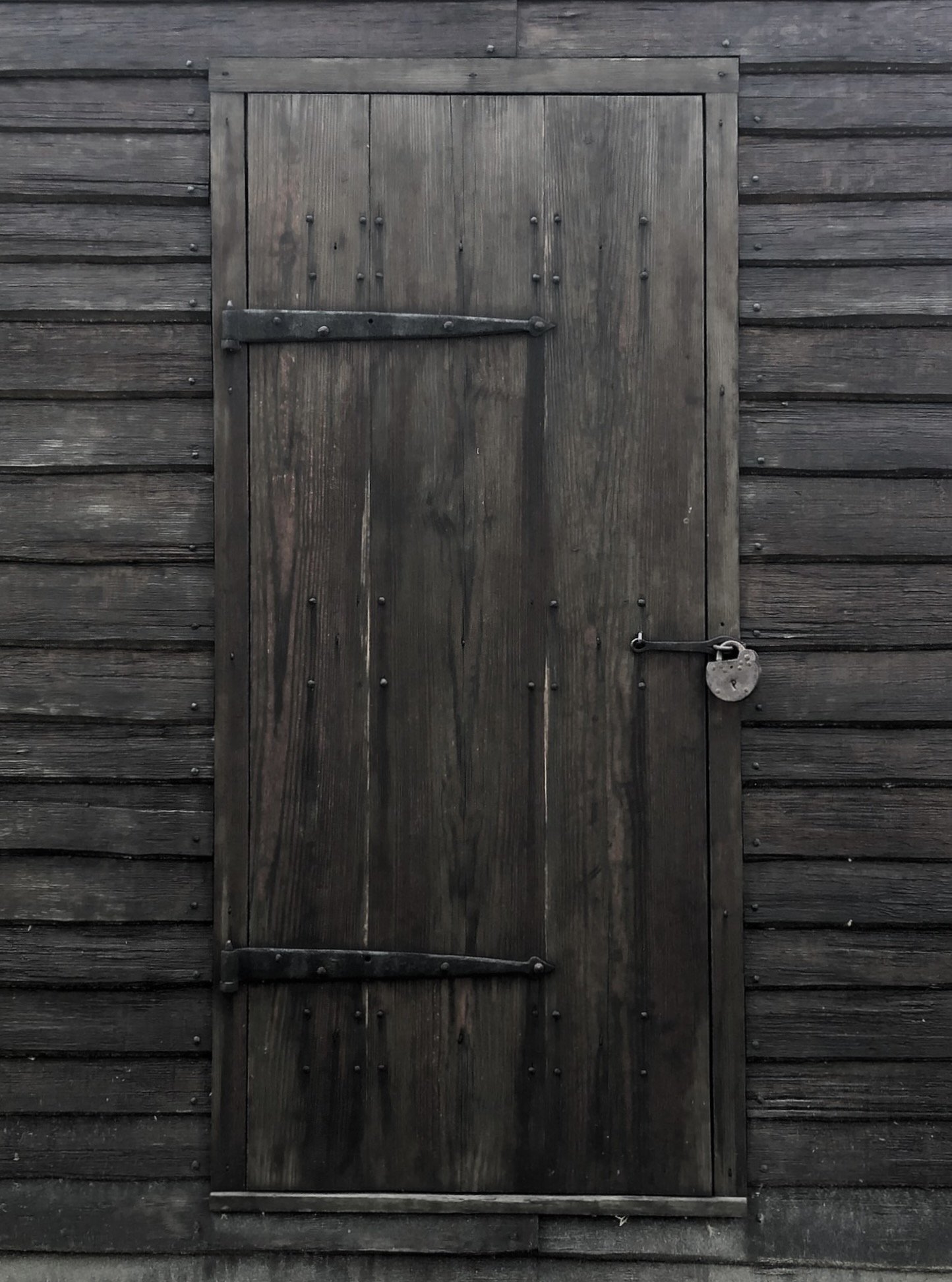To be told that the seventeenth-century civilization of England's largest and most populous American dominion, the Chesapeake colonies of Virginia and Maryland, has vanished almost without trace above ground, challenges credulity. Yet, that reality, stranger than fiction, is the inescapable testament of an impressive body of evidence recently accumulated in excavations on sites south from Middle Plantation to southern Maryland, to the northern neck of Virginia, and all along the York and James rivers.
Cary Carson, “Impermanent Architecture in the Southern American Colonies”
Last week our Virginia Frame began its descent from the sky to the ground. I watched as the tall rafters came down one by one, were taken to pieces and put aside. The joists were lifted out, first from the plates and then from the sills, and all arranged in a row to be moved. The heavy ground sills were pulled apart until nothing remained of the assembled frame. The last, low-lying work was accomplished without remark from once-fascinated passers-by. It was a week of going away.
There is a strange remembering in all this. We are building and unbuilding, then building again, a kind of house that lay for three centuries almost wholly unremembered, though it once populated by the thousandfold an entire landscape of what it meant to be newly American. The story of its past ubiquity and near-complete disappearance (only three or four remain) can hardly be believed, even now. I suppose the story of the architectural form we call the Virginia House is the strangest story of American place I know.
Last month at the annual Colonial Williamsburg Woodworking Conference, Master Carpenter Garland Wood told the story of the Virginia House, beginning at Jamestown in 1607 and concluding with our house now in the carpenter’s yard. The Tidewater region of 17th century Virginia was a disputed frontier, where Old World diseases borne from Europe and Africa collided against New World conditions, with the Powhatan and English peoples often at war between them. Under such conditions, an English settler was unlikely to survive. If by chance he lasted out the first five years, he was considered “seasoned,” and might hope to live a full life—at least, according to the foreshortened expectations of the time.
The settlers’ first dwellings were medieval English houses, mostly rude timber, mud, and clay piles with reed-thatch roofs. But the old building ways quickly proved unsuited to the new conditions. Garland startled his admirers by bluntly stating that the New World broke the Old World building trade, leaving it unpeopled and ill-practiced. House walls were reduced from masonry to wood, and carpentry simplified to its least remainder. The old highly-skilled practices proved unsustainable, in part because those practices were ill-adapted to the new environment, in part because so few skilled craftspeople survived. Among those few who did survive, it was found to be so very much more profitable to take up tobacco farming than to practice their trade, that even triple wages were not enough to tempt builders back into practice. Tobacco became the currency of the day. Yet a profitable tobacco crop quickly exhausted the soil, so the settlers were driven ever onward to new lands and new houses.
Many building experiments were chanced through those first decades, converging as early as the 1630s on the beginnings of the Virginia Frame house. This was the first distinctly American house-type to emerge from English precedent on the North American continent, the fragile seed of all that would follow. It was a kind of modest masterpiece of expediency, dispensing with masonry foundations, reducing complicated mortise-and-tenon joinery mostly to simple lap joints, and replacing wattle-and-daub walls and thatch roofs with a light frame covered with plain, five-foot strips of riven (split rather than sawn) boards called “clapboards.” All thought of permanence was put aside. The Virginia House was conceived to return to earth and be left behind in less than a lifetime.
These structures were called “earthfast” for being fastened directly to the earth without foundations. Sometimes the corner posts that supported the walls were extended a few more feet straight down into the ground. Sometimes the sills were simply set on the ground directly. In either case, the rot would soon set in from underneath, which was a sacrifice willingly made. There were plenty of earthfast structures in England. The house was built to last no more than a decade or two or three. But along with the rot came something for which the English were not prepared by experience: there were no termites in England.
While the posts or sills sat heavily in earth, the roof was a very lightly-built affair, constructed separately from the box frame and consisting only of a series of “common” rafters with very little lateral stability. That problem was addressed by disposing of all heavy and cumbersome roofing and instead sheathing the roof with the same clapboards that clad the walls. The nailed clapboards kept the roof from leaning, but roofs are not walls, and though they stood upright and kept the occupants dry, they seeped moisture into the rafters every time it rained. So while your house was silently being eaten from underneath, it was slowly rotting away overhead. Always, always, it was going away. Still, like the Powhatan yehakins with which it cohabited the region, it served its purpose very well. For its purpose was passing shelter, not permanence.
Such radical simplifications were compelled upon the settlers by the rigors of the North American “wilderness,” as it was to them. America was to the English settler a boundless forest of fearful prospect, and at the same time a field of apparently inexhaustible opportunity. The woods were the enemy of farming and had to be cleared. But the wood thus liberated from the land was the friend of houses. So our lot was cast early. As Garland put it, “We are a timber-clearing, wooden-building people.”
Thus arose an informal trade of “clapboard carpenters” who learned to use riven lengths of board in place of complicated joinery and masonry walls and heavily reinforced roof framing. But clapboards could only serve their simplifying purpose as a wood-of-all-work if it was practical to attach them easily and cheaply, which was made possible for the first time in history by a bounty of mass-produced nails from the new industrial machine of England. So was the Virginia House born of the brief and stormy marriage of British modernity and American eternity, of industry and wilderness.
The moment would pass, and by degrees the Virginia Frame was replaced by the more regularized “flush-framing” method, which was the first step to the balloon and platform frames we use today. One manner of making Americans gave way to another. The Virginia Frame would persist in more modest applications—as the roof system in log cabins, as tobacco barns, as humble farm outbuildings.
There is something to be said for impermanence, for the lengthening shadows. Our timbers are now disassembled and waiting at the edge of the yard, to be taken away on Friday. A building that passes away is more like ourselves. Not what we dream of being, but what we are. “All things fall and are built again,” as the poet says. Are we ever truly gone without a trace remaining?
Good night!
Michael
The Innermost House Foundation is an entirely volunteer organization
dedicated to renewing transcendental values for our age.
IMAGES
M. Lorence: Richneck Barn
D. Lorence: Wall Plates
Jeffrey Klee: Virginia House Plans
M. Lorence: Clapboard Wall and Door
QUOTATIONS
”To be told that. . .” Cary Carson et al, “Impermanent Architecture in the Southern American Colonies” Winterthur Portfolio, 1981




